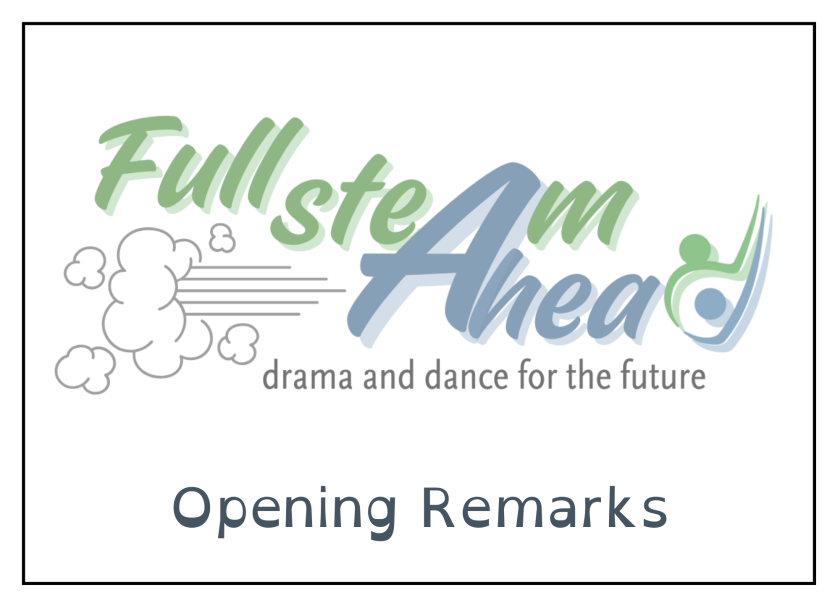
I finished writing this speech at 11:30pm last night and I was really tempted to use AI to do it. All of the ideas and experiences that have resonated with my thinking about this conference and its theme were collected into a document and I thought about depositing all of it into the language model and tweaking it afterwards.
As an adult, I know that I can use AI as one tool - recognizing when it produces a draft that is workable, when it hallucinates facts or information, and when it doesn’t sound like me - because I’ve had the chance to develop writing skills and critical thinking skills in other learning contexts over many years. But I have been recognizing that my relationship with AI is often one of surrendering the fruitful struggle I associate with being creative. It also means surrendering the satisfaction of a great idea or ownership of my work.
So these words will be mine.
The things that showed up in my collection of ideas related to the ways that the arts and teaching will be affected by new technologies like generative AI, what innovation without the humanities looks like, and the rise of anti-intellectualism. It also included reflections about what kind of future we want to dream, and the ways that Black, First Nations, Métis, Inuit, racialized, queer, disabled, and transgender communities are already refusing the systems and structures that harm us through their creative acts. I’ve reflected on the importance of joy and hope in the work we do with students and how we should balance it with the truth.
The very good news is that the jobs least threatened by AI typically require strong human interaction or creativity which means creative fields and teaching are not at risk of being replaced (U.S. Career Institute, 2023). Work that requires human leadership and high-level strategic decision-making are also not at risk - so you don’t have to worry about an AI CODE President any time soon.
Students in drama and dance are building just such skills through their engagement with play, problem-solving, and cooperation. They are thinking about the needs of other human beings in planning a creation, they are considering multiple perspectives, and they are engaging in deep thinking about topics.
The arts are an essential sector in our economy: the Ontario Arts Council released a report this year sharing that the number of full-time professional artists in Ontario has nearly doubled in 30 years, representing an 82% increase over that period, outpacing the overall labour market which grew 34% (Nordcity & Ontario Arts Council, 2025). The response of the education system to marginalize drama and dance has no basis in their viability as careers.
As technology has changed, the arts have been at the forefront of creatively engaging with it. This kind of innovation keeps the needs of human beings and our kin at the centre of the work, while innovation without the humanities tends to prioritize solutions that reinforce inequity. Lyft Shuttle is a ride-share service that follows a specific route with designated drop off points. It is a bus. The danger is that privatized versions of public services put those public services at risk of degradation, harming the most vulnerable users (Tait, 2019).
These solutions are frankly anti-intellectual. They are not based on a rigorous understanding of the social issues that surround the problem, or maybe they are simply based on a pursuit of luxury at the expense of those already marginalized by our financial systems. An approach to education that values this kind of innovation is also one that dehumanizes the students in it, and drives them to find quick fixes to their struggles as students.
It’s a system that demands production.
While learning about AI and its possibilities and limitations are essential for our students, the arts are just as essential because they hold the possibility of centering process - playing, failing, gathering information, growing, reimagining.
In the wider world, systems and structures that privilege a few are being exposed for the harms that they cause and the work of artists shines a light on these truths and threatens that status quo. Clearly, the arts are a threat to those that act in bad faith.
More than that, the groups harmed most within these systems persist by refusing to be limited by them and by creating in spite of the barriers. Because of these creative efforts, we are invited to dream of futures free from barriers. The work we do as artists, artist-educators, and arts educators are essential to fostering generations of dreamers that opt in to creative struggle in the search for those futures.
While it may feel dystopic right now, I hold more hope than ever because you are here. Because you are part of the community that advocates for the critical role of drama and dance in education. Because you are joining us in imagining a future based in ethics and care for others.
All this to say, I’m extremely grateful to everyone that is here, giving themselves the gift of a weekend with other educators.
My hope for you is that these reflections offer you something to wrestle with as you engage in each of your workshops this weekend [and beyond].
Tessa Lofthouse
CODE President
October 18, 2025
References
Nordcity & Ontario Arts Council (2025): Arts Across Ontario Impact Report (PDF)
Tait, A. (2019, January 14). Why do we keep praising Silicon Valley for reinventing the wheel? | Amelia Tait. The Guardian. https://www.theguardian.com/commentisfree/2019/jan/14/silicon-valley-marketing-student-loan
U.S. Career Institute. (2023). The 65 jobs with the lowest risk of automation by Artificial Intelligence and robots - USCI. U.S. Career Institute. https://www.uscareerinstitute.edu/blog/65-jobs-with-the-lowest-risk-of-automation-by-ai-and-robots
For further advocacy resources and tools, visit www.code.on.ca/advocacy
